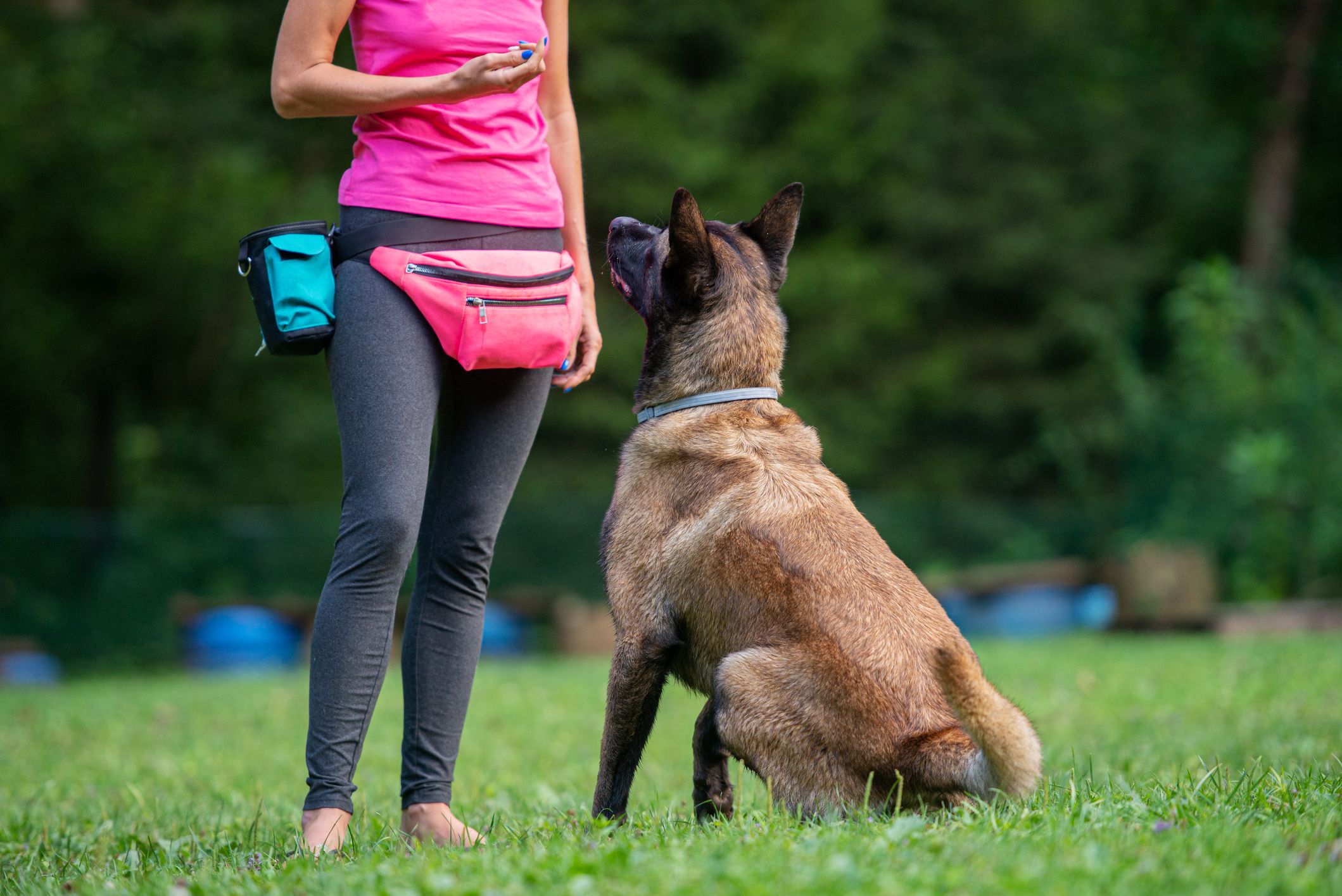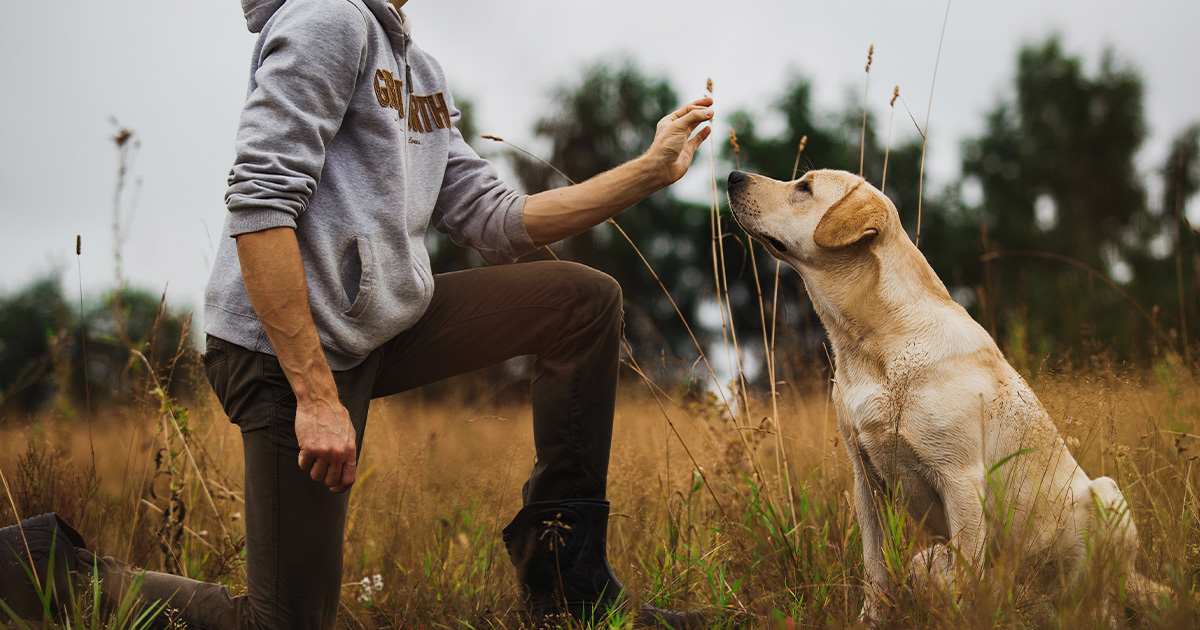Why Consistency is Key in Dog Training for Long-Term Success
Why Consistency is Key in Dog Training for Long-Term Success
Blog Article
Beginner's Guide to Effective Pet Training in the house
Successfully training a canine at home calls for a nuanced understanding of canine behavior and reliable interaction techniques. Developing clear training objectives, utilizing high-grade incentives, and keeping uniformity throughout family members are vital components. Integrating training right into day-to-day regimens can enhance both interaction and retention.
Understanding Canine Actions
Understanding dog actions is important for effective training and cultivating an unified connection in between people and their canine buddies. Pet dogs interact mainly through body movement, vocalizations, and faces, making it critical for owners to interpret these signals accurately. Recognizing habits such as tail wagging, growling, or cring can offer insights into a canine's emotional state and purposes.

Typical behavioral concerns, such as hostility, anxiousness, or excessive barking, usually originate from misunderstandings or unmet needs. Observing and dealing with these problems immediately can stop escalation and make certain a positive training experience. By fostering a deep understanding of dog habits, proprietors can customize their training methods to suit their canine friends, eventually bring about a well-behaved and pleased pet.
Necessary Educating Tools
A well-appointed training room can considerably enhance the efficiency of canine training in your home. Vital training tools guarantee that both the instructor and the pet dog can involve in efficient sessions that foster knowing and bonding.

Spending in a sturdy chain and a comfy, well-fitting collar or harness is important for security and control. These devices help develop borders and ensure the dog remains protected during training. In addition, a marked training location, without disturbances, help focus for both the canine and the fitness instructor.
Training help such as training pads, cones, or dexterity equipment can additionally improve the experience by presenting selection and difficulties. Lastly, having a notebook or electronic app for tracking progression can be indispensable, allowing you to note successes and areas for improvement. Making use of these important tools will certainly create a positive training environment and lay the foundation for effective knowing.
Creating a Training Regimen
Developing a constant training routine is essential for reliable canine training in the house. A well-structured regular not only assists in enhancing desired habits however also provides your pet dog with a complacency and predictability. To develop an efficient training routine, begin by determining certain training goals, such as fundamental commands, chain walking, or house-breaking.
Choose an assigned time daily for training sessions, preferably when your dog is alert and receptive. Procedure must be brief, roughly 5 to 15 minutes, to maintain emphasis and avoid fatigue. Uniformity in timing and atmosphere will certainly boost your dog's learning experience.
Integrate training into daily tasks to reinforce abilities. For instance, method commands throughout walks or nourishment, which incorporates discovering into natural regimens. Additionally, continue to be versatile and adjust the regular as navigate to these guys needed, suiting your dog's power levels and state of mind.
Favorable Support Strategies
Positive support techniques are essential to efficient canine training, promoting desired behaviors through rewards instead than punishment. This technique utilizes favorable stimulations, such as deals with, praise, or play, to urge pets to duplicate details activities. The keystone of this technique is timing; incentives need to be offered instantly adhering to the desired habits to produce a clear organization.
When executing favorable support, it is important to choose benefits that are motivating for your canine. High-value treats, such as small pieces of poultry or cheese, can be particularly reliable during training sessions. Furthermore, differing the benefits can maintain your pet dog's passion and excitement.
Begin with simple commands, like "rest" or "stay," and gradually development to much more intricate jobs. Consistency is essential; ensure that all member of the family make use of the very same commands and reward systems to prevent complication.
Additionally, it is crucial to continue to be person and prevent stress. Dogs, like human beings, discover at their very own rate. By cultivating a helpful training atmosphere through positive reinforcement, you can enhance your canine's learning experience while strengthening the bond between you and your furry companion, laying the foundation for successful training results.
Common Educating Challenges
While educating a pet in your home can be a satisfying experience, it typically features a set of typical difficulties that can examine both perseverance and consistency. One common problem is interruption. Canines may become easily sidetracked by sounds, motions, and even scents in their setting, making it difficult to preserve their focus throughout training sessions.
Another difficulty is variance in commands and support. It can perplex the canine and impede progress if household participants utilize various cues or incentives. Establishing a unified technique is vital for reliable communication.
In YOURURL.com addition, pets can experience stress or stress, specifically if they do not recognize what is expected of them. This can cause unfavorable habits, such as chewing or barking.
Finally, the timing of reinforcement is critical (Dog training). Delayed rewards can diminish Source the efficiency of positive reinforcement, as canines may fail to attach the behavior with the benefit
Conquering these obstacles requires dedication, clear communication, and a structured training plan. Recognizing and addressing these common obstacles will certainly pave the method for a more effective and delightful training experience at home.
Conclusion
To conclude, successful dog training at home necessitates a comprehensive understanding of canine actions and effective communication methods. By establishing clear training goals and utilizing high-quality deals with alongside favorable support, the training process comes to be more gratifying for both the fitness instructor and the pet. Adaptability, patience, and uniformity are vital elements that help with discovering. Eventually, incorporating training right into daily routines boosts the bond between dog and owner, making the experience both efficient and satisfying.
Developing a consistent training regimen is essential for efficient pet dog training at home.Favorable reinforcement methods are fundamental to effective pet training, promoting wanted behaviors via incentives rather than punishment (Dog training). By promoting a supportive training atmosphere via positive support, you can boost your pet's knowing experience while enhancing the bond in between you and your fuzzy buddy, laying the foundation for successful training outcomes
In verdict, effective pet training at home demands a detailed understanding of canine actions and effective interaction strategies. By developing clear training objectives and using top quality treats alongside positive support, the training procedure becomes much more satisfying for both the trainer and the pet.
Report this page